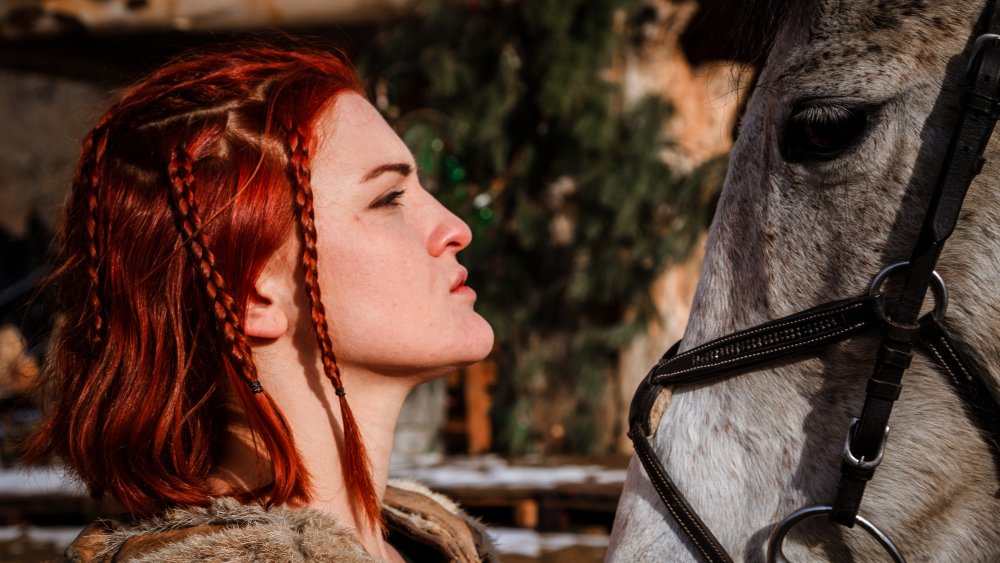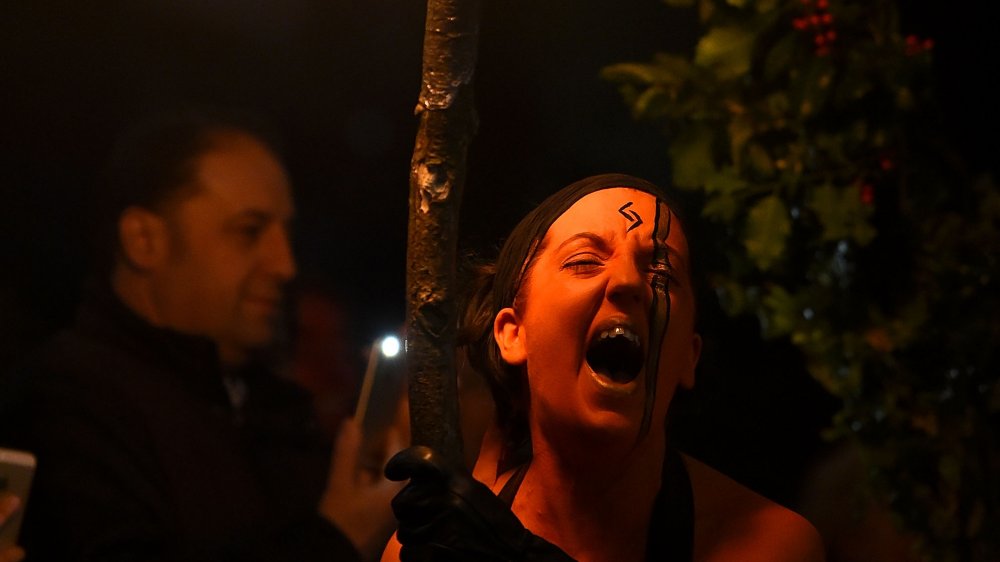What Life Was Like For Ancient Celtic Women
The term "Celts" (pronounced with a hard C) denotes a group of Indo-European people that migrated from the Middle East and made their way across southern Europe, through the Iberian Peninsula, and up into the U.K., where their movement stopped, as described by University of Leicester Dr. Mark Jobling. There was no single, unifying Celtic nation, nor was there a single language, although Celtic heritage includes Gaels (Scotland), Irish (Ireland), Galatians (Spain), Gauls (France), and Britons (England), as stated by History.
This makes studying their history a bit challenging. It does not help that most information comes from secondhand sources, as explained by Live Science, such as the Greek geographer and historian Strabo. Nor the fact that this information was used as propaganda by the Romans, as cited by Ancient Origins, to portray the Celts as savages: because of this, depictions of the Celts tended to focus on their brutal, martial combat, how they strode into battle naked, or on horseback, and even famed Greek philosopher Aristotle criticized them for having, "a kind of crazed fearlessness," as the Great Courses Daily writes.
Amongst ancient people, though, the role of women in Celtic society remains absolutely distinct. The Celts were unique in the kind of prominence and power they afforded women, who could not only partake in the political realm as rulers and diplomats, but conduct business, own property, have any profession, choose and/or divorce their suitors, and not only fight alongside men in combat — but lead them.
Warriors, queens, mediators, and poets
Ancient Celts were, ultimately, a patriarchal society, but compared to their contemporaries, they were extremely progressive. In their homelands, Celtic women often adopted religious, medical, and artistic professions, such as druids, priestesses, poets, and foreign diplomats in military or political disputes, as Roman historian Plutarch wrote, described by CeltLearn. During Hannibal's assault against Rome, a woman mediated a treaty between him and the Celtic ruler Volcae. On the relationship side, Celtic marriage was considered a partnership (ancient Rome, in contrast, considered wives to be property), and while nobles did have arranged marriages, women could not only initiate divorces, but said divorces saw property split equally.
Most spectacular of all are the stories of Celtic women warriors. Their savagery in combat was renowned, and they terrified opponents through lunatic dances, and wild battlefield displays. Roman historians such as Diodorus of Sicily described them as being nearly as tall and strong as men. They attended combat training, such as a famous school run by the legendary woman warrior Scathach, who trained the greatest hero in Irish history, Cúchulainn. Storied regent and general Boudicca, of course, led a revolt against the Roman army, after they decided to not take her seriously, and assaulted her family. She ultimately poisoned herself, rather than succumb to Roman rule.
Overall, the Celts were light-years ahead of their peers, when it came to women. This serves as a point of pride, not only for their descendants, but the rest of the globe.

